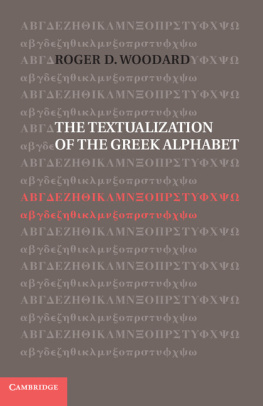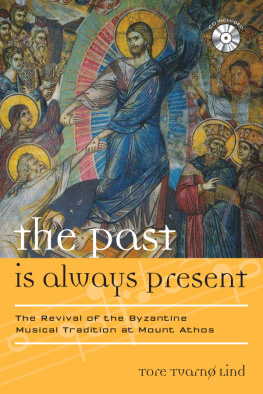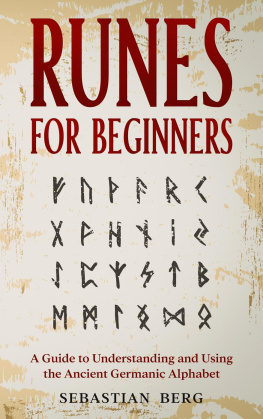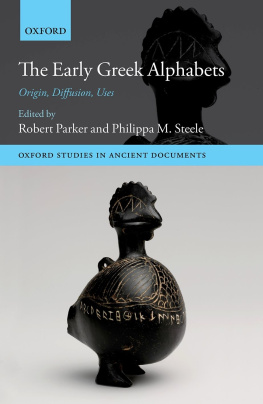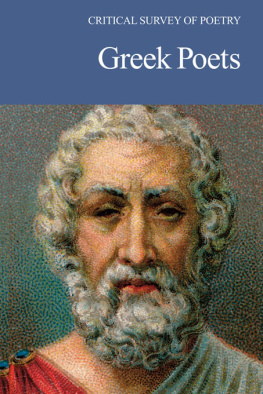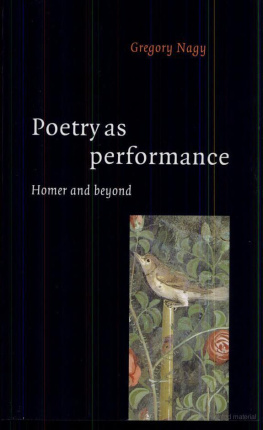
The Textualization of the Greek Alphabet
In this book, Roger D. Woodard argues that when the Greeks first began to use the alphabet, they viewed themselves as participants in a performance phenomenon conceptually modeled on the performances of the oral poets. Since a time older than Greek antiquity, the oral poets of Indo-European tradition had been called weavers of words their extemporaneous performance of poetry was word weaving. With the arrival of the new technology of the alphabet and the onset of Greek literacy, the very act of producing written symbols was interpreted as a comparable performance activity, albeit one in which almost everyone could participate, not only the select few. It was this new conceptualization of and participation in performance activity by the masses that eventually, or perhaps quickly, resulted in the demise of oral composition in performance in Greece. In conjunction with this investigation, Woodard analyzes a set of copper plaques inscribed with repeated alphabetic series and a line of what he interprets to be text, which attests to this archaic Greek conceptualization of the performance of symbol crafting.
ROGER D. WOODARD is Andrew van Vranken Raymond Professor of Classics and Professor of Linguistics at the University of Buffalo (The State University of New York). His visiting positions have included appointments at the American Academy in Rome, Oxford University, the Centro di Antropologia e Mondo Antico dellUniversit di Siena, the Max-Planck-Institut fr Wissenschaftsgeschichte in Berlin, and the Max-Planck-Institut fr evolutionre Anthropologie in Leipzig. He is author or editor of many books, including Myth, Ritual, and the Warrior in Roman and Indo-European Antiquity ; The Cambridge Companion to Greek Mythology ; Indo-European Sacred Space: Vedic and Roman Cult ; Indo-European Myth and Religion: A Manual ; Ovid: Fasti (with A. J. Boyle); The Cambridge Encyclopedia of the Worlds Ancient Languages ; Greek Writing from Knossos to Homer: A Linguistic Interpretation of the Origin of the Greek Alphabet and the Continuity of Ancient Greek Literacy ; and On Interpreting Morphological Change: The Greek Reflexive Pronoun .
The Textualization of the Greek Alphabet
Roger D. Woodard
University of Buffalo
With a chapter by
David A. Scott
32 Avenue of the Americas, New York, NY 100132473, USA
Cambridge University Press is part of the University of Cambridge.
It furthers the Universitys mission by disseminating knowledge in the pursuit of education, learning, and research at the highest international levels of excellence.
www.cambridge.org
Information on this title: www.cambridge.org/9781107028111
Roger D. Woodard 2014
This publication is in copyright. Subject to statutory exception and to the provisions of relevant collective licensing agreements, no reproduction of any part may take place without the written permission of Cambridge University Press.
First published 2014
Printed in the United States of America
A catalog record for this publication is available from the British Library.
Library of Congress Cataloging in Publication data
Woodard, Roger D.
The textualization of the Greek alphabet / Roger D. Woodard ; with a
chapter by David A. Scott.
pages cm
Includes bibliographical references and index.
ISBN 978-1-107-02811-1 (hardback)
1. Greek language Alphabet. 2. Greek language History. 3. Greek literature History
and criticism. I. Scott, David A., 1948 II. Title.
PA273.W664 2014
481.1dc23 2013015500
ISBN 978-1-107-02811-1 Hardback
Additional resources for this publication at www.cambridge.org/9781107028111
Cambridge University Press has no responsibility for the persistence or accuracy of URLs for external or third-party Internet Web sites referred to in this publication and does not guarantee that any content on such Web sites is, or will remain, accurate or appropriate.
For Ed Brown, teacher and friend, and to the memory of his beloved Nickey
Preface
Homer, heroes bard, was deathly vexed in Ios
When by the Muses some boys did a riddle weave;
With Nectar, Nereids of Sea anointed him and laid
Him dead beneath a rocky ledge on shore,
For Thetis he had glorified, her son as well, and other
Heroes fights, and deeds of Laertes son of Ithaka.
Blessed among the islands of the sea Ios is, for it has hid,
The tiny isle, the Muses and the Graces star.
Greek Anthology 7.1 (Alcaeus of Messene)
The story goes that Homer died when fisher boys on Ios posed him a riddle that he could not unknot. Something like this: Those we caught we left behind; those we did not catch we brought back with us. What is it? It was no fish, as Homer seemed to imagine, but lice. And they say that this cleverly woven web its creation inspired by the very Muses proved to be Homers undoing when he could not tease apart its fibers.
But I think not. It was no weaving of a riddle that was Homers bane but the weaving of the alphabet when the Muses began to show their favors far and wide to practically anyone who could scratch out its symbols not just to some boys on Ios. It was a woven viral hexameter that did him in.
There are many indications of this, not least of which is the great variability of letter shapes that were employed in early Greek inscriptional writing, within individual inscriptions, producing variegated graphemic patterns text, literally. This variability has long been noticed. The prominence of the back-and-forth twining lines of boustrophedon is another indication. But the triad of copper plaques with which this study begins and that provides a continuous thread passing through the narrative of this work, I will argue, drags this metaphoric weaving out and lays it before us, making it unmistakably recognizable, gathering our attention to the alphabetic fabric that might have otherwise escaped our attention.
A word about that. While (1) the set of copper plaques etched with abecedarium after abecedarium and (2) the concept of the weaving of alphabetic strands are interlinked in this work, each is a distinct phenomenon. The investigation of each of the two constitutes a separate study. Each forms the centerpiece of a separate thesis. One thesis does not depend on the other, but one informs the other. One thesis concerns the interpretation of a particularly unique set of documents; the other thesis addresses the earliest Greek conceptualizations of alphabetic writing. The thoughtful reader is asked to evaluate them separately.
This book has affiliated with it a dedicated Cambridge University Press Web site: .
Acknowledgments
There are many to whom the author needs and wishes to offer his gratitude for assistance, encouragement, and insight provided in various valuable ways. To attempt to name all would inevitably result in the regrettable omission of some; but special thanks must be expressed to Martin Schyen of Oslo and Irma Wehgartner of the Martin-von-Wagner-Museum in Wrzburg; David A. Scott (who contributed the third chapter of this work) and his conservation staff at the J. Paul Getty Museum in Los Angeles; Bernard Comrie and his colleagues at the Max-Planck-Institut fr evolutionre Anthropologie in Leipzig; Jens Braarvig of the University of Oslo, Department of Cultural Studies and Oriental Languages; David Porter, Kerry Christensen, Edan Dekel, Meredith Hoppin, Amanda Wilcox, and other members of the Williams College Classics Seminar of 2008, especially Paul A. Woodard, for sharing the podium with me; Temple Wright and Erika Bainbridge of the Center for Hellenic Studies Library in Washington, D.C.; James Clackson of Jesus College, Cambridge; President Hermione Lee and the Fellows of Wolfson College, Oxford; Robert Parker of New College, Oxford; Maggie Sasanow and Charles Crowther at the Centre for the Study of Ancient Documents, Oxford; Anna Davies, Philomen Probert, John Penney, and Andreas Willi of the Oxford Philology Seminar; Eleanor Dickey of the University of Exeter; Brent Vine and his colleagues in the UCLA Departments of Classics and Linguistics; and Leonard Chiarelli of the Aziz S. Atiya Middle East Library at the University of Utah.

